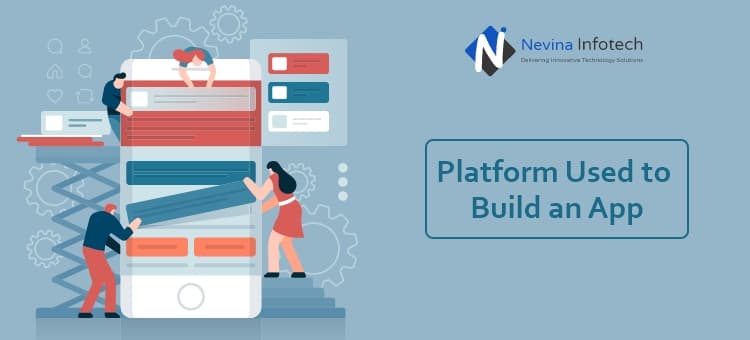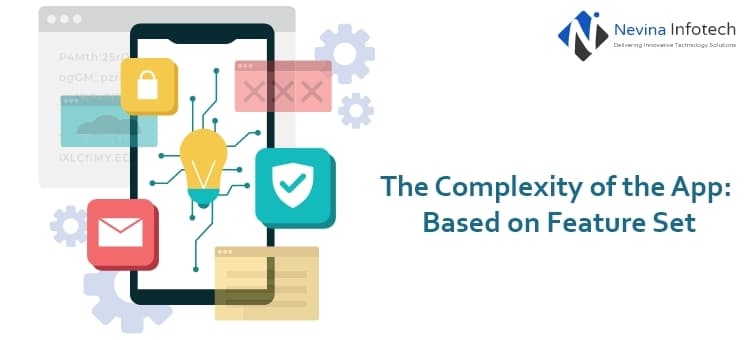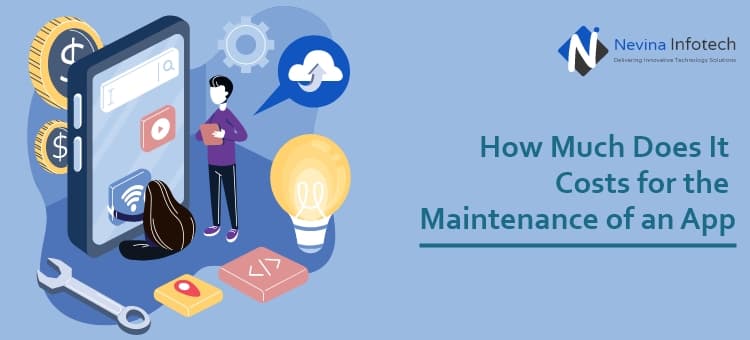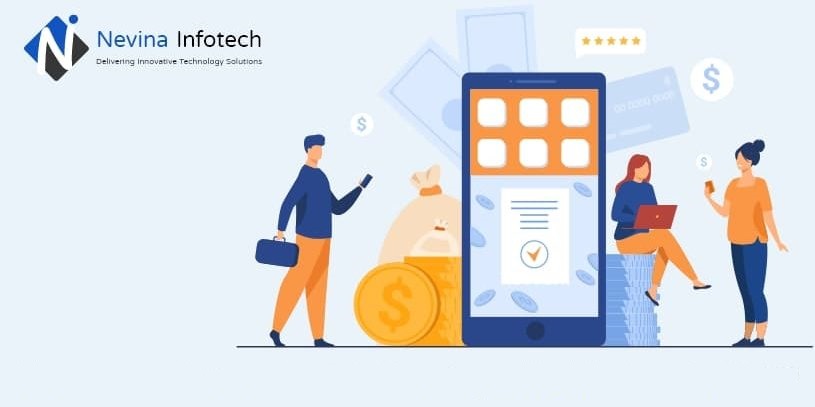Smartphone users are growing on an exponential basis, giving rise to the popularity of mobile apps. Before diving deep into the field, let us try to understand the basics of mobile app development. The procedure for developing applications for mobile devices is called mobile app development. Some mobile apps are pre-installed on mobile phones, whereas some need to be installed separately from a Play Store.
The mobile apps are of multiple types. First of all, native apps are installed from an app store or in-built apps already available on the device. These apps may or may not need the Internet to use them. Then, there are mobile web apps that use a browser to provide service to the user. Internet connectivity is a must for mobile web apps. Lastly, there are hybrid web apps that combine both mobile web apps and native apps. A mobile app development company generally offers development services of all kinds mentioned above.
Why Mobile Apps for Business?
The tremendous rise in mobile user’ count, to the tune of 7.41 billion by 2024, provides a lucrative opportunity for businesses to focus on the mobile app market, showing an upward trend. The over-dependence of users on mobile phones for their day-to-day activities and an app for almost every aspect of life further strengthens their belief. It is evident that a smartphone user spends more than 90% of his time on mobile apps.
Further, consumers nowadays do not hesitate to splurge money on in-app purchases. As per a study, the spending in the application store is supposed to touch $171 billion by the year 2024, exhibiting a remarkable growth of 92% 5 years down the line. These statistics justify the move of conglomerates to opt for mobile application development services instead of going for a more conventional approach to building a website.
Significance of Mobile App Development Cost:
Mobile app developmental cost is such an important factor that affects various businesses, stakeholders, app developers, and end users. Understanding the financial aspects of app development is essential for several reasons:
Budget Planning:
Estimating the development cost is crucial for businesses and individuals to create realistic budgets and secure necessary funding. An accurate cost assessment helps in avoiding financial surprises during the development process.
Resource Allocation:
Knowing the cost allows for efficient resource allocation, including time, manpower, and technology. This ensures that the development process remains on track and aligned with the available resources.
Return on Investment (ROI) Calculation:
Mobile app development cost directly impacts the potential ROI. Businesses need to weigh the investment against the expected returns to determine the project’s viability.
Pricing and Monetisation Strategies:
Understanding the development cost informs pricing and monetization strategies. It helps in setting competitive prices or deciding on in-app purchase models, advertisements, or subscription plans.
Risk Assessment:
Mobile app development cost assessment aids in risk evaluation. It enables stakeholders to identify potential financial risks and create contingency plans to mitigate them.
Smartphone App Development Tips – Advanced Mobile App
Platform Used to Build an App

One can use the platforms to build a mobile app that must be chosen from either a native app development platform or a cross-platform/ hybrid app development platform. The native medium is selected to develop a mobile app for a particular platform like iOS or Android. The native platform makes use of the tools and languages available locally to a specific forum. A hybrid platform is used to develop a mobile app capable of running on multiple platforms with no or minor code changes.
Hybrid apps save a considerable amount of time and money as a similar codebase can be used for various operating systems. On the other hand, different native apps are needed for different platforms which increases the development cost and time involved. A plus point of using a native app is that it provides optimum performance as it has been developed for that specific platform only. The hybrid apps, however, might face application crashes and performance issues due to the generalized approach.
The Complexity of the App: Based on the Feature Set

The cost of mobile app development depends upon the complexity level of the app. Mobile apps can be divided into various categories, but complexity level-wise, there are three major categories:
- Server-Less Basic Apps: These mobile apps include diet planners, calendar apps, and information-providing apps. They do not need any remote data server. The cost of developing these kinds of apps ranges between $1K and $5K.
- Apps with Servers: These mobile apps included financial apps, banking apps, and e-commerce apps. They need to store data on remote web servers and also expect sophisticated coding. The expenditures incurred in the development of this category of apps vary from $8K to $50K.
- Mobile Games: The game apps are challenging to price as the cost depends on whether the game is 3D or 2D and whether it uses virtual reality or not. However, a guesstimate of the gaming development cost would be between $5K and $200K; and may even cost higher than that.
The feature set of the app affects the overall app development cost—for example, a push notification feature costs around $4K to $5K. But, the features do not come with a price tag. One cannot expect the feature cost to remain uniform in all the apps. So, one cannot precisely calculate the development costs, depending on the features. It also depends on the mobile application development company hired to develop the app.
The Average Cost of Developing an App: Simple, Medium, Complex
To highlight the variation in the cost of developing a mobile app depending upon their feature set and complexity level, mobile apps have been divided into three classes viz. simple, medium, and complex.
| Category | Features | Hours to Develop |
|---|---|---|
| Simple |
| 400 to 500 |
| Medium |
| 500 to 800 |
| Complex |
| 800 to 1500 |
Another parameter plays a crucial role in calculating the app development cost, i.e., the developer’s location. Because the developers’ hourly charges vary from country to country, it can impact the cost of mobile app development to a significant extent.
Factors Affecting Mobile App Development Cost:
Platform Selection (iOS, Android, Cross-Platform):
The choice of mobile platforms significantly influences development costs. Developing separate apps for iOS and Android can be more expensive due to coding, testing, and maintenance for two different ecosystems. Cross-platform development, on the other hand, can reduce costs by allowing code reuse but may require adaptations for specific platform requirements. The decision should align with the target audience and business goals, impacting the overall budget for development.
App Complexity and Features:
The complexity of the app, including the number of features and their intricacy, plays a major role in cost determination. A simple informational app costs considerably less than a complex e-commerce platform with payment gateways, user profiles, and extensive database integration. Each added feature increases development time and expenses, demanding careful consideration during project planning.
Design and User Interface:
Without design and user interface, it is impossible to imagine the development of a site, as both of them have equal importance. A well-designed app improves user experience and engagement but often incurs higher design costs. Custom graphics, animations, and user-friendly interfaces can add to the overall development expense. Balancing design quality with budget constraints is essential.
Development Team Location:
The geographical location of the development team impacts costs due to varying labor rates. Hiring local developers in high-cost regions is more expensive than outsourcing to countries with lower hourly rates. Offshore development can reduce expenses, but it requires effective communication and project management to ensure a successful collaboration.
Maintenance and Updates:
Often underestimated, the costs of maintaining and updating a mobile app can accumulate over time. Maintenance includes fixing bugs, ensuring compatibility with new OS versions, and enhancing security. Frequent updates to add new features and improve performance are essential for user satisfaction but involve ongoing expenses. Consideration of long-term maintenance and update costs is crucial for budgeting and sustainability.
How Much Does It Cost for the Maintenance of an App

Once you develop a mobile app and release it on an app store, the maintenance phase kicks off. The maintenance costs should be considered for calculating the overall development cost. The mobile app maintenance generally includes fixing the bugs as and when discovered and updating the mobile app to accommodate the latest OS release. Apart from that, it also provides code optimization cycles and enhances the app’s stability to prevent repetitive crashes. The maintenance is a continuous process and continues throughout the lifecycle of the mobile app. The maintenance costs vary from app to app, but in general, it is around 20% to 25% of the overall app development cost.
Strategies for Cost Optimization:
Prioritising Must-Have Features:
Start with a minimal viable product (MVP) that includes core functionalities and avoids costly, non-essential additions. By prioritizing essential features, you can get your app to market faster and within budget. This approach allows you to gather user feedback, identify necessary improvements, and allocate resources where they have the most significant impact.
Agile Development and Iteration:
Agile development methodologies, such as Scrum and Kanban, promote cost-efficiency by breaking the project into manageable iterations. This approach enables continuous improvement and adaptation based on user feedback. Agile methodologies help prevent costly late-stage changes and ensure that development efforts remain aligned with evolving requirements. By iterating and releasing features incrementally, you can also generate revenue early in the development process.
Outsourcing vs. In-House Development:
By keeping in mind the budget and the needs you can choose among both of them such as outsourcing and in-house development. Outsourcing can be cost-effective, as it often provides access to skilled developers at lower rates. However, clear communication and project management are crucial for successful collaboration. In-house development may be more expensive but can offer better control and faster communication.
How does IoT in Education Industry?
Use of Open Source Resources:
Leveraging open-source software and libraries can significantly reduce development costs. Open-source resources provide pre-built solutions, saving time and effort. For instance, using open-source frameworks like React Native or Flutter for cross-platform development can cut costs by enabling code reuse.
Tools and components are readily available and often maintained by a thriving community. However, ensure that open-source resources align with your project’s requirements and licensing considerations. To meet consumer expectations and requirements a business can incorporate these strategies which would help in staying within the budget.
Marketing and Promotion Costs:
Marketing and promotion are essential components of the overall cost of mobile app development. These expenses are incurred to create awareness, drive user acquisition, and ensure the app’s success in a competitive market. Here’s a breakdown of these costs:
App Store Fees:
Submission fees are charged by both Apple’s App Store and Google Play Store. These fees can vary based on factors like app category and location. These costs are occurred only once in a while and should be taken into consideration.
Advertising and User Acquisition:
One of the primary marketing expenses is advertising to attract users which includes various marketing such as social media marketing, search engine marketing as well and Pay-per-click advertising. These costs can escalate significantly based on the ad platform, targeting options, and competition.
Public Relations (PR):
PR activities, including press releases, media outreach, and PR agencies, can incur substantial costs. PR helps in building the app’s reputation, generating buzz, and securing media coverage.
App Store Optimization (ASO):
ASO involves optimizing the app’s store listing to improve visibility in app stores. Costs may include keyword research, app icon design, and copywriting.
Content Marketing:
Content marketing expenses encompass blog posts, video creation, and other content assets that promote the app and engage users. Quality content can contribute to long-term user acquisition and retention.
Email Marketing:
Building and maintaining an email subscriber list for app promotion, newsletters, and updates incur costs. These costs may include email marketing software, content creation, and list management.
Events and Promotions:
Participating in industry events, trade shows, and promotions may require registration fees, booth rentals, and promotional materials. These activities help in networking and increasing app visibility.
Analytics and User Tracking:
The tools and software required for tracking and analyzing user behavior and campaign performance also form part of marketing expenses. This data is invaluable for refining marketing strategies and improving ROI.
App Review Sites and Influencers:
Some marketing strategies involve submitting apps for review on popular app review sites or collaborating with influencers to endorse the app. Costs may include submission fees, influencer payments, or product giveaways.
Social Media Management:
Managing social media accounts for the app requires time and effort. This may involve hiring social media managers or using social media management tools, incurring costs for salaries or subscriptions.
Landing Page and Website:
The creation and maintenance of a dedicated landing page or website for the app can require web design and hosting costs.
Balancing marketing and promotion costs is essential for achieving app visibility and user acquisition without exceeding your budget. Careful planning and allocation of resources to different marketing channels and strategies are critical to maximizing the impact of your marketing spend.
On-Demand App Ideas For Startup
Why Choose Nevina for Enterprise Mobile App Development
The development of a mobile app is a meticulous job that needs proficiency and expertise. It is always better to choose a specialist for better results. Nevina Infotech has been at the forefront of mobile app development for years and understands the technical aspects and commercial aspects of the app.
The insights provided by tech buffs at Nevina Infotech would help in the ideation process, but the hand-holding is done till its conclusion. Nevina Infotech believes in sticking to the time and budget, and following innovative project management processes. The estimation processes at Nevina Infotech are the best in the Industry resulting in minimum deviations from the decided budget. Nevina is a name to reckon with as a mobile app development company USA that needs no introduction.
Top Mobile App Development Tools In 2023
Conclusion
The one-size-fits-all approach doesn’t work in the case of mobile apps. The costs depend on the features required, complexity, and developer’s location, etc., by and large. Different businesses have different goals to be achieved and different target segments for their mobile apps. Apart from this, the use of APIs, payment gateways, type of platform, etc., also affects the cost of developing a mobile app. To conclude, hiring a mobile app development company by businesses is an investment in the right direction.

Frequently Asked Questions (FAQs)
What is the cost of developing a mobile app in 2024?
The expense of developing a mobile app in 2024 is dependent on factors such as target platform, complexity level, type of app, features, etc. The mobile app would cost you anywhere between $5K and $125K.
What is the time taken to develop a mobile app in 2024?
The time taken to develop a mobile app depends on the feature set included in the app. The developer’s expertise and complexity level also play a role in the same. A typical mobile app usually takes anywhere between 200 to 5000 hours.
Which approach of app development is better – native or hybrid?
The hybrid approach ensures greater reach at a lesser cost, but performance-wise native apps are better. The choice depends on the time and budget available to develop the same.
Do I need to hire a mobile app development company for development as well as maintenance?
One can opt for hiring a company solely for developing the mobile app, but it is always better to hire the same company for development and maintenance to minimize downtime.
Read More:-
- How To Build A Successful Travel Business App?
- How To Build A Food Delivery App?
- Top Tips to Create an App Like Splitwise
- How Much It Cost To Create An E-Learning App with Latest Features
- How to Create a Cryptocurrency Wallet like as Exodus
- Cost For Developing A Doctor Appointment Booking App
- How Much Does eCommerce Website Development Cost in 2023?
- How Much Does it Cost to Develop a Cryptocurrency Exchange App?



